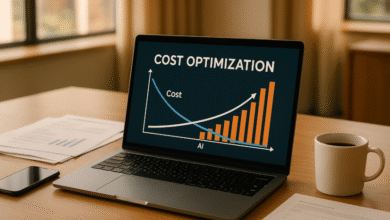Trading: A Comprehensive Guide for Beginners and Experts

Trading is an exciting and dynamic way to engage with financial markets, offering opportunities to make profits by buying and selling various assets. Whether you are interested in stocks, forex, commodities, or cryptocurrencies, understanding the fundamentals of trading is crucial to your success. This comprehensive guide will walk you through the essential concepts, strategies, tools, and psychology needed to become a confident trader.
What is Trading?
Trading involves the buying and selling of financial instruments in various markets to profit from price fluctuations. Unlike investing, which focuses on long-term growth by holding assets for months or years, trading aims to capitalize on short- to medium-term price movements.
There are several types of trading based on the market and timeframe:
- Stock Trading: Buying and selling shares of companies.
- Forex Trading: Trading currencies in the foreign exchange market.
- Commodity Trading: Trading physical goods like gold, oil, and agricultural products.
- Cryptocurrency Trading: Buying and selling digital currencies like Bitcoin and Ethereum.
Each market has its characteristics, risks, and opportunities, making it important to choose one that fits your interest and risk tolerance.
Types of Trading Strategies
Successful trading depends on having a well-defined strategy. Here are some popular trading styles:
- Day Trading: Buying and selling assets within the same day to profit from small price changes.
- Swing Trading: Holding positions for several days or weeks to capture medium-term trends.
- Scalping: Making numerous quick trades to gain small profits on minor price movements.
- Position Trading: Long-term trading based on fundamental trends, holding assets for weeks to months.
- Algorithmic Trading: Using computer programs and algorithms to execute trades automatically based on predefined criteria.
Choosing the right strategy depends on your personality, capital, and market knowledge.
See also: The Future of Sustainable Energy: How Solar Energy is Leading the Way
Financial Markets Explained
Understanding the markets you trade in is fundamental:
- Stock Market: Where shares of publicly traded companies are bought and sold. Major exchanges include the NYSE and NASDAQ.
- Forex Market: The largest global market, operating 24/5, involving currency pairs like EUR/USD.
- Cryptocurrency Market: Digital currency trading on exchanges like Binance and Coinbase, known for high volatility.
- Commodity Market: Includes physical goods trading with futures contracts.
- Derivatives Market: Instruments like options and futures that derive value from underlying assets.
Each market has unique trading hours, volatility, and regulatory environments.
Key Trading Terminologies
Familiarity with trading jargon helps navigate the markets:
- Bid and Ask: Bid is the highest price a buyer will pay; ask is the lowest price a seller will accept.
- Spread: The difference between bid and ask prices.
- Leverage: Borrowing funds to increase trading position size.
- Margin: The collateral required to open a leveraged trade.
- Stop Loss: An order to sell an asset once it reaches a certain price to limit losses.
- Take Profit: An order to close a trade at a predetermined profit level.
- Order Types: Market order (immediate execution), limit order (execute at a set price), stop order (execute after a trigger price).
Technical Analysis in Trading
Technical analysis involves studying price charts and indicators to predict future market movements.
- Chart Types: Candlestick charts show open, high, low, and close prices and are widely used for pattern recognition.
- Indicators: Tools like Moving Averages smooth price data, RSI (Relative Strength Index) shows momentum, and MACD (Moving Average Convergence Divergence) indicates trend changes.
- Patterns: Common price patterns such as Head and Shoulders or Double Tops can signal potential reversals or continuations.
Mastering technical analysis helps traders make informed entry and exit decisions.
Fundamental Analysis
Fundamental analysis evaluates the intrinsic value of an asset by examining economic indicators, company earnings, and market news.
- Economic data like GDP, unemployment rates, and inflation impact currency and stock prices.
- Earnings reports reveal company profitability and future prospects.
- News events such as geopolitical tensions or central bank decisions can cause volatility.
- Sector and industry trends help identify promising opportunities.
Combining fundamental and technical analysis often produces stronger trading signals.
Risk Management in Trading
Preserving capital is vital. Risk management includes:
- Setting Stop Losses: Limiting potential losses on trades.
- Position Sizing: Determining the appropriate amount to trade relative to your account size.
- Diversification: Spreading trades across assets to reduce risk exposure.
- Risk-Reward Ratio: Ensuring potential gains outweigh potential losses before entering a trade.
Consistent risk management prevents devastating losses and sustains long-term trading success.
Trading Psychology
Your mindset is often the most challenging aspect of trading:
- Emotional Discipline: Avoid impulsive decisions driven by fear or greed.
- Overcoming Fear and Greed: Recognize these emotions and maintain rational trading behavior.
- Trading Journal: Document your trades to analyze mistakes and successes.
- Confidence Building: Practice with demo accounts and small trades before scaling up.
Mental strength separates successful traders from the rest.
Tools and Platforms for Trading
Selecting the right tools improves efficiency:
- Trading Platforms: MetaTrader, Thinkorswim, and Interactive Brokers offer powerful trading capabilities.
- Charting Tools: TradingView provides extensive charting and community-shared analysis.
- Automated Trading: Bots and expert advisors can execute trades based on set algorithms.
- Mobile Apps: Enable trading on the go with real-time data access.
Explore different platforms to find what suits your trading style.
How to Start Trading: A Step-by-Step Guide
- Choose a Broker: Look for regulation, fees, and available markets.
- Open a Trading Account: Complete verification and fund your account.
- Set Initial Capital: Start with an amount you can afford to lose.
- Develop a Trading Plan: Define your goals, risk tolerance, and strategies.
- Practice: Use demo accounts before risking real money.
- Start Small: Make small trades and gradually increase as you gain confidence.
Common Trading Mistakes to Avoid
- Overtrading: Trading too frequently leads to higher costs and poor decisions.
- Ignoring Risk Management: Not using stop losses can result in big losses.
- Lack of Plan: Trading without a strategy increases risk.
- Emotional Trading: Avoid chasing losses or making impulsive decisions.
Learning from mistakes is essential for growth.
The Role of Technology in Modern Trading
Technology has transformed trading:
- High-Frequency Trading (HFT): Algorithms execute large numbers of trades in milliseconds.
- Artificial Intelligence: AI helps analyze vast data for better predictions.
- Blockchain: Enhances transparency and security in transactions.
Staying updated on technology trends can give traders an edge.
Regulations and Legal Considerations
Trading is regulated to protect investors:
- Regulations vary by country and asset class.
- Know tax obligations on your profits.
- Beware of scams and unregulated brokers.
Always trade with reputable brokers and stay informed about legal requirements.
Trading for Long-Term Wealth vs. Short-Term Gains
- Long-Term Investing: Less stressful, lower fees, focused on asset growth.
- Short-Term Trading: Potential for quick profits but higher risk and time commitment.
Your choice depends on your goals, time availability, and risk appetite.
Conclusion: Mastering the Art of Trading
Trading is a skill developed over time through education, practice, and discipline. By understanding the markets, mastering strategies, managing risks, and maintaining the right mindset, you can increase your chances of success. Remember, consistent learning and patience are your best allies on this exciting journey.




